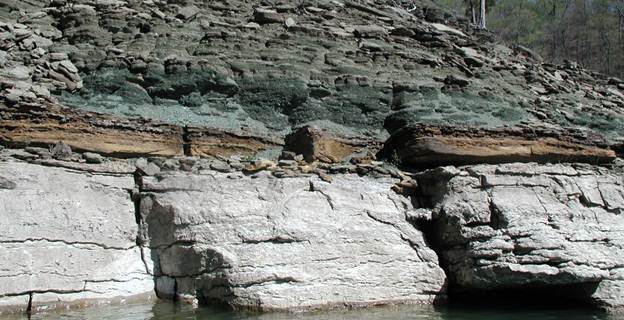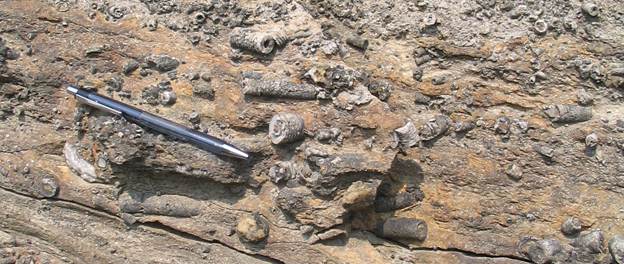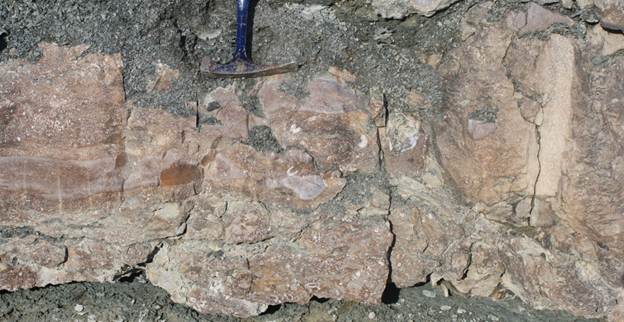

KGS Home > Geology of Kentucky
Coarse Crinoidal Grainstones
Krause and Meyer (2004) reported a coarse crinoidal grainstone facies on the flanks of Fort Payne buildups in Kentucky. Knox and Stapor (2003) called the same facies the crinoidal-bryozoan grainstone facies. Both facies consist of coarse skeletal grainstones and packstones that drape the flanks of the buildups or occur adjacent to known buildups (Fig. 1). Grainstones are a type of limestone. They consist of visible grains (often skeletal debris) in contact with each other, with no visible mudstone. Where underlain by massive wackestone facies, the grainstones may appear as an orange- to buff-colored capping layer (Fig. 2). The layer may thicken downdip and off the flanks of the underlying carbonate. Knox and Stapor (2003) noted that this facies drapes green core shale or heterolithic shale and limestone facies in Tennessee where the massive wackestone facies is locally missing. The grainstones show internal deformation and slumping (Fig. 2).

Figure 1. Typical appearance of coarse crinoidal grainstone Facies (orange) capping
and draping massive wackestone (white to gray) and capped by gray-green fossiliferous shale
on the flanks of a Fort Payne buildup.

Figure 3. Detail of coarse crinoidal grainstone showing crinoidal debris.

Figure 3. Detail of coarse crinoidal grainstone laterally off
of a Fort Payne buildup showing soft-sediment deformation, rip-up clasts,
sharp irregular base, and coarse fossil debris.
Back to Typical Facies of Fort Payne Buildups
Continue to Gray-Green Fossiliferous Shale
Back to top of Geology of the Fort Payne Formation